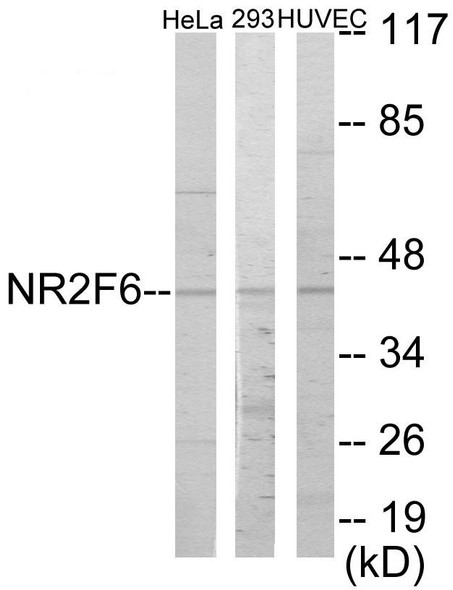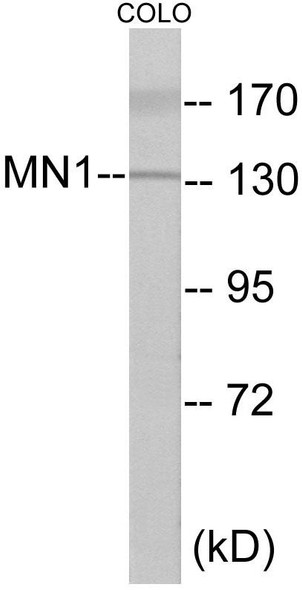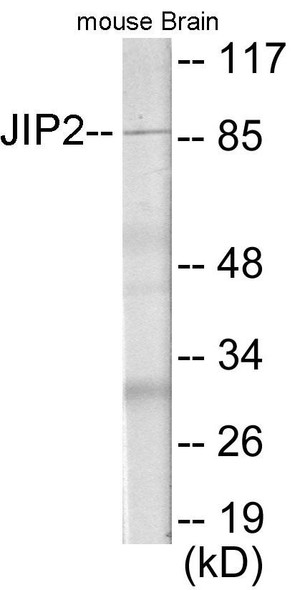Description
DCLK2 Colorimetric Cell-Based ELISA
The DCLK2 Colorimetric Cell-Based ELISA Kit is an innovative tool designed for the detection and analysis of DCLK2 protein levels in cell samples. With its high sensitivity and specificity, this kit provides researchers with accurate and reliable results, making it a valuable asset for a variety of research applications.DCLK2, also known as Doublecortin Like Kinase 2, is a protein that plays a key role in cell differentiation and development. Abnormal levels of DCLK2 have been linked to various diseases and disorders, including cancer and neurological disorders, making it an important biomarker for studying and understanding these conditions.
With the DCLK2 Colorimetric Cell-Based ELISA Kit, researchers can gain valuable insights into the role of DCLK2 in cellular processes, disease mechanisms, and potential therapeutic strategies. This kit is easy to use, convenient, and provides excellent accuracy and reproducibility, making it a valuable tool for advancing scientific discoveries in the field of cell biology and beyond.
| Product Name: | DCLK2 Colorimetric Cell-Based ELISA |
| Product Code: | CBCAB01154 |
| ELISA Type: | Cell-Based |
| Target: | DCLK2 |
| Reactivity: | Human, Mouse |
| Dynamic Range: | > 5000 Cells |
| Detection Method: | Colorimetric 450 nmStorage/Stability:4°C/6 Months |
| Format: | 96-Well Microplate |
The DCLK2 Colorimetric Cell-Based ELISA Kit is a convenient, lysate-free, high throughput and sensitive assay kit that can detect DCLK2 protein expression profile in cells. The kit can be used for measuring the relative amounts of DCLK2 in cultured cells as well as screening for the effects that various treatments, inhibitors (ie siRNA or chemicals), or activators have on DCLK2.
Qualitative determination of DCLK2 concentration is achieved by an indirect ELISA format. In essence, DCLK2 is captured by DCLK2-specific primary antibodies while the HRP-conjugated secondary antibodies bind the Fc region of the primary antibody. Through this binding, the HRP enzyme conjugated to the secondary antibody can catalyze a colorimetric reaction upon substrate addition. Due to the qualitative nature of the Cell-Based ELISA, multiple normalization methods are needed:
| 1. | A monoclonal antibody specific for human GAPDH is included to serve as an internal positive control in normalizing the target absorbance values. |
| 2. | Following the colorimetric measurement of HRP activity via substrate addition, the Crystal Violet whole-cell staining method may be used to determine cell density. After staining, the results can be analysed by normalizing the absorbance values to cell amounts, by which the plating difference can be adjusted. |
| Database Information: | Gene ID: 166614, UniProt ID: Q8N568, OMIM: 0, Unigene: Hs.591683 |
| Gene Symbol: | DCLK2 |
| Sub Type: | None |
| UniProt Protein Function: | DCAMKL2: Protein kinase with a significantly reduced C(a2+)/CAM affinity and dependence compared to other members of the CaMK family. May play a role in the down-regulation of CRE-dependent gene activation probably by phosphorylation of the CREB coactivator CRTC2/TORC2 and the resulting retention of TORC2 in the cytoplasm. Belongs to the protein kinase superfamily. CAMK Ser/Thr protein kinase family. CaMK subfamily. 3 isoforms of the human protein are produced by alternative splicing. |
| UniProt Protein Details: | Protein type:Kinase, protein; Protein kinase, CAMK; EC 2.7.11.1; Protein kinase, Ser/Thr (non-receptor); CAMK group; DCAMKL family Chromosomal Location of Human Ortholog: 4q31.3 Cellular Component: cytoskeleton; cytoplasm Molecular Function:protein serine/threonine kinase activity; ATP binding Biological Process: protein amino acid phosphorylation |
| NCBI Summary: | This gene encodes a member of the protein kinase superfamily and the doublecortin family. The protein encoded by this gene contains two N-terminal doublecortin domains, which bind microtubules and regulate microtubule polymerization, a C-terminal serine/threonine protein kinase domain, which shows substantial homology to Ca2+/calmodulin-dependent protein kinase, and a serine/proline-rich domain in between the doublecortin and the protein kinase domains, which mediates multiple protein-protein interactions. The microtubule-polymerizing activity of the encoded protein is independent of its protein kinase activity. Mouse studies show that the DCX gene, another family member, and this gene share function in the establishment of hippocampal organization and that their absence results in a severe epileptic phenotype and lethality, as described in human patients with lissencephaly. Multiple alternatively spliced transcript variants have been identified. [provided by RefSeq, Sep 2010] |
| UniProt Code: | Q8N568 |
| NCBI GenInfo Identifier: | 156713428 |
| NCBI Gene ID: | 166614 |
| NCBI Accession: | NP_001035350.2 |
| UniProt Secondary Accession: | Q8N568,Q59GC8, Q8N399, C9J5Q9, |
| UniProt Related Accession: | Q8N568 |
| Molecular Weight: | 85,384 Da |
| NCBI Full Name: | serine/threonine-protein kinase DCLK2 isoform a |
| NCBI Synonym Full Names: | doublecortin-like kinase 2 |
| NCBI Official Symbol: | DCLK2 |
| NCBI Official Synonym Symbols: | CL2; DCK2; CLIK2; DCDC3; CLICK2; DCDC3B; DCAMKL2; CLICK-II |
| NCBI Protein Information: | serine/threonine-protein kinase DCLK2 |
| UniProt Protein Name: | Serine/threonine-protein kinase DCLK2 |
| UniProt Synonym Protein Names: | CaMK-like CREB regulatory kinase 2; CL2; CLICK-II; CLICK2; Doublecortin domain-containing protein 3B; Doublecortin-like and CAM kinase-like 2; Doublecortin-like kinase 2 |
| Protein Family: | Serine/threonine-protein kinase |
| UniProt Gene Name: | DCLK2 |
| UniProt Entry Name: | DCLK2_HUMAN |
| Component | Quantity |
| 96-Well Cell Culture Clear-Bottom Microplate | 2 plates |
| 10X TBS | 24 mL |
| Quenching Buffer | 24 mL |
| Blocking Buffer | 50 mL |
| 15X Wash Buffer | 50 mL |
| Primary Antibody Diluent | 12 mL |
| 100x Anti-Phospho Target Antibody | 60 µL |
| 100x Anti-Target Antibody | 60 µL |
| Anti-GAPDH Antibody | 60 µL |
| HRP-Conjugated Anti-Rabbit IgG Antibody | 12 mL |
| HRP-Conjugated Anti-Mouse IgG Antibody | 12 mL |
| SDS Solution | 12 mL |
| Stop Solution | 24 mL |
| Ready-to-Use Substrate | 12 mL |
| Crystal Violet Solution | 12 mL |
| Adhesive Plate Seals | 2 seals |
The following materials and/or equipment are NOT provided in this kit but are necessary to successfully conduct the experiment:
- Microplate reader able to measure absorbance at 450 nm and/or 595 nm for Crystal Violet Cell Staining (Optional)
- Micropipettes with capability of measuring volumes ranging from 1 µL to 1 ml
- 37% formaldehyde (Sigma Cat# F-8775) or formaldehyde from other sources
- Squirt bottle, manifold dispenser, multichannel pipette reservoir or automated microplate washer
- Graph paper or computer software capable of generating or displaying logarithmic functions
- Absorbent papers or vacuum aspirator
- Test tubes or microfuge tubes capable of storing ≥1 ml
- Poly-L-Lysine (Sigma Cat# P4832 for suspension cells)
- Orbital shaker (optional)
- Deionized or sterile water
*Note: Protocols are specific to each batch/lot. For the correct instructions please follow the protocol included in your kit.
| Step | Procedure |
| 1. | Seed 200 µL of 20,000 adherent cells in culture medium in each well of a 96-well plate. The plates included in the kit are sterile and treated for cell culture. For suspension cells and loosely attached cells, coat the plates with 100 µL of 10 µg/ml Poly-L-Lysine (not included) to each well of a 96-well plate for 30 minutes at 37°C prior to adding cells. |
| 2. | Incubate the cells for overnight at 37°C, 5% CO2. |
| 3. | Treat the cells as desired. |
| 4. | Remove the cell culture medium and rinse with 200 µL of 1x TBS, twice. |
| 5. | Fix the cells by incubating with 100 µL of Fixing Solution for 20 minutes at room temperature. The 4% formaldehyde is used for adherent cells and 8% formaldehyde is used for suspension cells and loosely attached cells. |
| 6. | Remove the Fixing Solution and wash the plate 3 times with 200 µL 1x Wash Buffer for five minutes each time with gentle shaking on the orbital shaker. The plate can be stored at 4°C for a week. |
| 7. | Add 100 µL of Quenching Buffer and incubate for 20 minutes at room temperature. |
| 8. | Wash the plate 3 times with 1x Wash Buffer for 5 minutes each time. |
| 9. | Add 200 µL of Blocking Buffer and incubate for 1 hour at room temperature. |
| 10. | Wash 3 times with 200 µL of 1x Wash Buffer for 5 minutes each time. |
| 11. | Add 50 µL of 1x primary antibodies (Anti-DCLK2 Antibody and/or Anti-GAPDH Antibody) to the corresponding wells, cover with Parafilm and incubate for 16 hours (overnight) at 4°C. If the target expression is known to be high, incubate for 2 hours at room temperature. |
| 12. | Wash 3 times with 200 µL of 1x Wash Buffer for 5 minutes each time. |
| 13. | Add 50 µL of 1x secondary antibodies (HRP-Conjugated AntiRabbit IgG Antibody or HRP-Conjugated Anti-Mouse IgG Antibody) to corresponding wells and incubate for 1.5 hours at room temperature. |
| 14. | Wash 3 times with 200 µL of 1x Wash Buffer for 5 minutes each time. |
| 15. | Add 50 µL of Ready-to-Use Substrate to each well and incubate for 30 minutes at room temperature in the dark. |
| 16. | Add 50 µL of Stop Solution to each well and read OD at 450 nm immediately using the microplate reader. |
(Additional Crystal Violet staining may be performed if desired – details of this may be found in the kit technical manual.)






